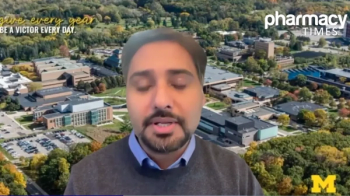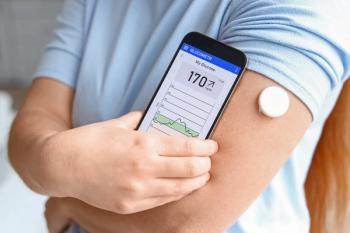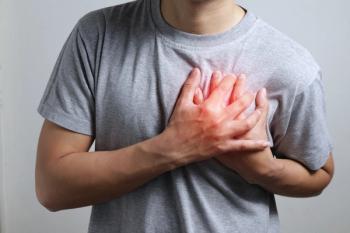
- Fall 2021
- Volume 15
- Issue 02
Pharmacists See Opportunities in TikTok to Educate, Advocate
As the app TikTok has exploded over the past 2 years, influencers have identified new ways to gain followers and expand their influence using the app’s short-video format. Among these influencers are a growing number of pharmacists and pharmacy students who are educating young viewers and advocating for the profession.
Monthly users of the app have grown nearly 800% since January 2018, according to data released in August 2020 and reported by CNBC.1 Over 100 million Americans are considered active monthly users, and over 50 million are daily users.1 The pandemic played a major role in this growth, with users in the United States skyrocketing from almost 39.9 million in October 2019 to almost 92 million in June 2020.1
According to a paper published by the Society for Academic Emergency Medicine, TikTok has been a major source of information during the pandemic, especially for younger viewers. Investigators searched the hashtag coronavirus on the app and found 90 billion views, whereas the hashtags medicine and doctor received 1.4 billion and 6.7 billion views, respectively. Pharmacists on the app are also finding niches in which to educate the audience, including the 3 pharmacists profiled below.
SAVANNAH MALM, PHARMD, IBCLC
Like many TikTok users, pharmacist Savannah Malm, PharmD, IBCLC, downloaded the app out of boredom at the beginning of the pandemic. At the time, she was stuck in South Carolina while her husband was in Idaho, and her International Board of Lactation Consultant Examiners exam was canceled.
“I downloaded the app just to pass the time,” Malm said. “At that point, there was no indication that I was going to do anything beneficial on it.”
Now with 705.8 thousand followers around the world and 23.1 million likes, Malm (with the username @rx0rcist) has garnered one of the largest followings among pharmacists on TikTok. Malm’s interests include lactation counseling and COVID-19 vaccine advocacy, so she aims to educate viewers on both issues. In the interview, Malm said she is the first person in the country to have both a PharmD and IBCLC certification.
She now posts a combination of educational content as well as what she termed “accountability content,” which involves calling out those who post misinformation on the app.
“I find people doing illegal things [or] posting misinformation in very egregious ways,” Malm said. “It’s a mix between [those].”
However, Malm’s popularity has come with a price. In addition to the millions of likes and positive comments, she and her family have been attacked and threatened online by antivaccine groups and others who disagree with her content. In 2020, she posted a video discussing pharmacists’ right of refusal to fill a prescription and was attacked online by a chronic pain advocacy group.
“That was the first experience I had with people who didn’t like to hear the truth, so they responded with very violent attacks,” Malm said.
She also began calling out videos with fake COVID-19 vaccine cards in the spring of 2021 and was quickly attacked for that as well. One video received almost 11 million views, after which her address was posted online. Malm then had to work with the Federal Bureau Investigation, although she said there is no way to know who posted her address, and it is still posted to this day.
“I’ve learned there are people who want to avoid accountability so badly that they will respond in such a way that they escalate it to very violent, angry threats,” Malm said.
When asked why she continues to use the app despite these attacks, Malm said she quit social media for 3 weeks and debated whether to return. Some viewers said she was endangering her young daughter by returning, but she decided that she wanted to use the platform to advocate for underrepresented groups and marginalized communities.
“Being a White person in America with the privilege I’ve been born into, [and] being able to just walk away from it, is a privilege that many marginalized communities do not have,” Malm said. “I don’t get to hide because they don’t get to hide. I want to be a true ally to these communities that I’m trying to serve and amplify their voices.” This chance to amplify marginalized voices is one of the major places Malm said she sees potential for TikTok as an educational tool. She added it is also a great way for her to talk about issues that interest her and to connect with like-minded people who also want to fight misinformation.
PETER GINN, PHARMD
Peter Ginn, PharmD, has also used TikTok as a tool to advocate for the profession—in particular, for provider status. Ginn graduated from Campbell University and now works in the intensive care unit (ICU) at a large community teaching hospital in North Carolina.
Like Malm, Ginn said he downloaded TikTok for entertainment during the first few weeks of the COVID-19 pandemic. He quickly found some medical creators and decided to post about pharmacy, because he said he did not see many pharmacists utilizing the app. Now he has 3227 followers and 42 thousand likes, under the username @pgpharmd. As the pandemic escalated, Ginn said he started tackling misinformation.
“I’m really interested in trying to create...factual COVID-19 information that is somewhat relatable [and] that combats some of the vaccine hesitancy that’s out there,” Ginn said.
Ginn explained that, at this point, almost every patient with COVID-19 he sees in the ICU is unvaccinated, so he hopes his content will reach those people. He also said the app has potential beyond the pandemic and suggested that short educational videos about commonly prescribed drugs could be especially successful.
“Everyone always [asks], ‘Do you have any questions for the pharmacist?’ And everyone always says, ‘No,’” Ginn said. Because of this, he said many patients might not know basic information about their medications, such as whether it is acceptable to take a certain prescription at night or whether it should be taken with food.
Ginn has also used the app to network with other content creators, including Malm, who he said has been an inspiration in pushing the issue of COVID-19 vaccines. Although Ginn said he does not feature his responses to misinformation as frequently as Malm does, he will often respond to misinformed comments or might make a video to explain the topic further.
In addition to working on COVID-19 content, Ginn said he is passionate about advocating for pharmacist provider status. With such a large potential audience on the app and with so much new recognition for the role of the pharmacist during the pandemic, Ginn said he sees a chance to accomplish this goal.
“TikTok can be used to advocate for provider status—both by current pharmacy students and practicing pharmacists,” Ginn said. “Pharmacists are some of the most accessible health care professionals, yet [the Centers for Medicare and Medicaid Services] does not recognize pharmacists as health care providers. When the COVID-19 pandemic dust settles in the future, I imagine I’ll try to advocate for pharmacists to be recognized as health care providers.”
SAGAR PAREKH, PHARMD
Unlike Malm and Ginn, who downloaded TikTok in early 2020, Sagar Parekh, PharmD, said he got started on the app during his third year of pharmacy school at the end of 2019. He initially started by posting humorous videos based on his experiences in retail pharmacy, but also included videos on his South Asian heritage and what it was like growing up as an Indian American.
“I just started creating these funny clips about being asked weird questions like ‘Hey, do you know where the bathroom is?’ while you’re a pharmacist,” Parekh said.
In addition to his first 2 topics, Parekh said he now creates content about working in a corporate environment. Since graduating from Rutgers University Ernest Mario School of Pharmacy in the spring with his doctor of pharmacy degree, Parekh said he works in the pharmaceutical industry and is participating in an oncology brand marketing fellowship through the Rutgers Institute for Pharmaceutical Industry Fellowships.
He has also uploaded some videos about the importance of COVID-19 vaccines, although he said this is not a major focus of his platform. Parekh said he likes to create funny content and entertain viewers, as there are many professionals who use the app as an educational tool.
“I view my platform as a place people can go for humorous jokes, for something that’s lighthearted, something that they can relate to, and just provide them a good laugh,” Parekh said.
He added that he sees boundless potential for the app both as an educational tool and as a network-building opportunity.
“There’s no roof to where it can go,” he said. “It can be a huge educational tool...with some of the fast facts you can provide, such as what different medications do. It can be a cool way for pharmacy students to stay engaged and stay in the loop while using a social platform that is really fun to be on.”
REFERENCES
- Sherman, A. TikTok reveals detailed user numbers for the first time. CNBC. Updated August 24, 2020. Accessed September 13, 2021.
https://www.cnbc.com/2020/08/24/tiktok-reveals-us-global-user-growth-numbers-for-first-time.html - Comp G, Dyer S, Gottlieb M. Is TikTok the next social media frontier for medicine? AEM Educ Train. 2020;5(3)10.1002/aet2.10532. doi:10.1002/aet2.10532
- Cortney tried. TikTok. August 14, 2021. Accessed September 13, 2021.
https://bit.ly/3k6U5ti
Articles in this issue
almost 4 years ago
Considerations for Environmentally Conscious Pharmacy Studentsalmost 4 years ago
Pharmacy Students Can Leverage Their Passions Into Their Careersalmost 4 years ago
Pharmacy Students Reflect on the Pandemic, Look to the Futurealmost 4 years ago
Working on a Research Team Helps Develop Essential Practices, Skillsalmost 4 years ago
Learning the Value of Community With the Indian Health Servicealmost 4 years ago
Make an Impact Through Point-of-Care TestingNewsletter
Stay informed on drug updates, treatment guidelines, and pharmacy practice trends—subscribe to Pharmacy Times for weekly clinical insights.
















































































































































































































